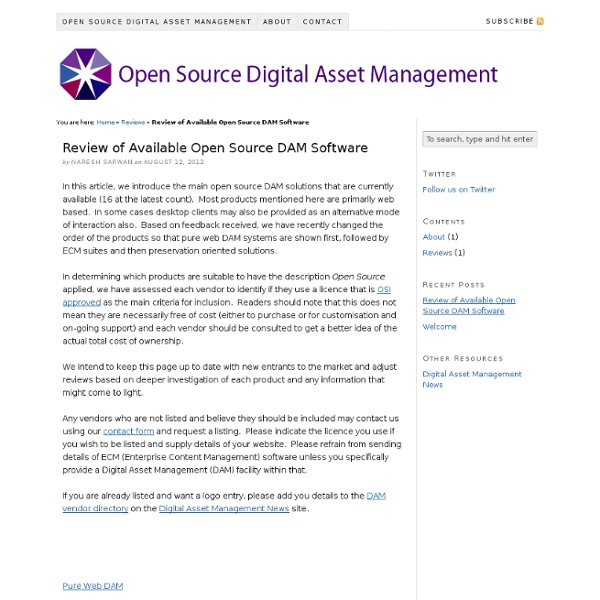Open Source Digital Asset Management (DAM) Software Reviews

Source Filmmaker
Developing games for Windows 8
Windows 8.1 offers new opportunities to create, distribute, and monetize games. Learn about porting your game and preparing a game for the Windows Store. Start developing your Windows Store game Choose DirectX and C++ for your Windows Store games For the most high-fidelity and rich experiences in 3D games, you’ll want to use the Windows 8.1 DirectX APIs. With C++, you have a direct line to the GPU, CPU and low-level services of the Windows 8 platform. DirectX is easier with Windows 8.1 because graphics stack is better integrated. Why create a game for the Windows Store? Perhaps you are a game developer coming from a different platform, or you have previously developed a game on an earlier version of DirectX on Windows. Reuse your code and leverage your game development experience: One of the greatest advantages of the DirectX/C++ development approach is that you can reuse significant amounts of your Windows Desktop game code to create a Windows Store game, a Windows Phone game.
MonoGame - Write Once, Play Everywhere
Developers
The SDK contains everything a developer needs to rapidly get their project going, polished and deployed, including: A complete version of the JavaScript Engine code is available for developers to browse and use during debugging. The Engine is completely modular allowing developers to select exactly what features they want to use, and modify or replace anything that isn't suitable for their game. The SDK includes a wide range of feature and code samples. The aim of these samples is to cleanly demonstrate to developers how to use all the different parts of the game engine. All of the code is fully documented and explained, and suitable to paste into your own project as a starting point for getting a new feature implemented. A complete set of the latest documentation is distributed in the SDK. The Local server replicates all the APIs provided by the live game servers. Built into the Local server are a collection of tools for debugging the game and assets.
The top 14 game engines: The list in full | Latest news from the game development industry
We reveal the most essential development platforms out today Develop’s breakdown of the top 14 game engines available today has come to an end, and you can find the full list here. Throughout the week we have been providing analysis of many of the best third-party development platforms on the market for developers of all sizes. From triple-A studios to indies, from PC and console developers to mobile, tablet, browser and HTML5 game creators, there is a game engine for everyone. Below we have a short overview of the platforms each engine supports, with a link to an analysis of each development platform featuring quick facts and short interviews with each vendor. (In alphabetical order) App Game Kit Company: The Game CreatorsPlatforms: Android, iOS, Mac, PCUsed in: Cannon Ball, Hide It Find It, Jumping JackPROFILE BigWorld Company: WargamingPlatforms: Browser, PCUsed in: World of Tanks, Grandia Online, Heroes: Scions of Phoenix, Moego, Realm of the TitansPROFILE BlitzTech CryEngine 3 GameBryo Rapid2D
Related:
Related:



